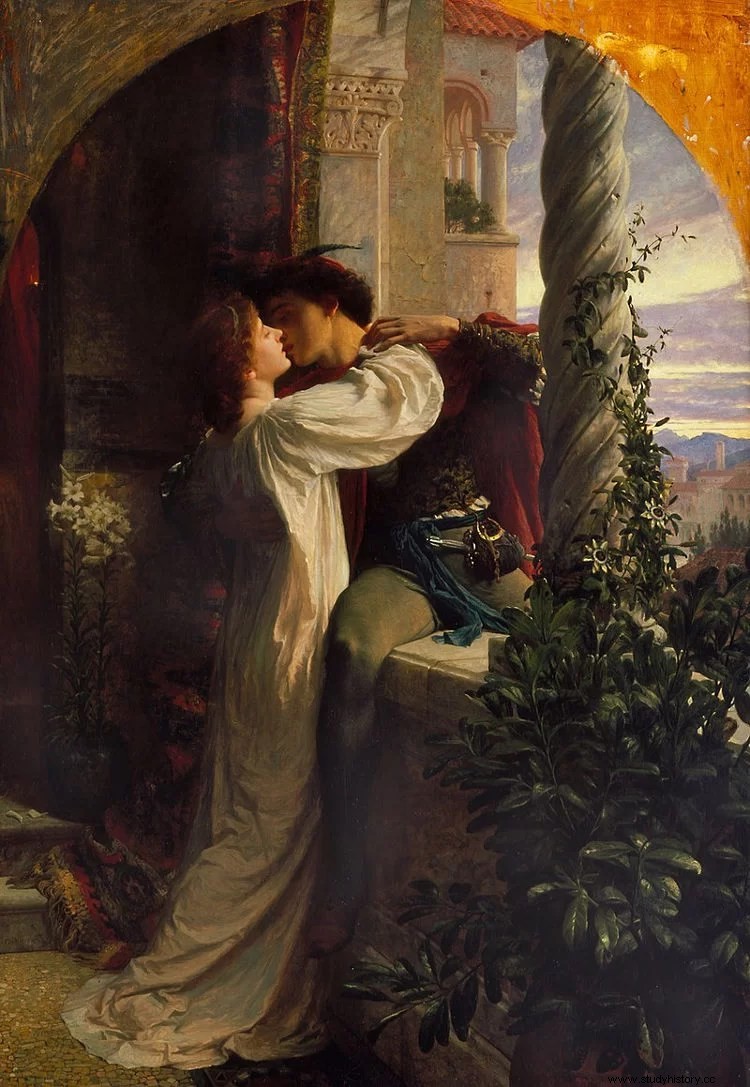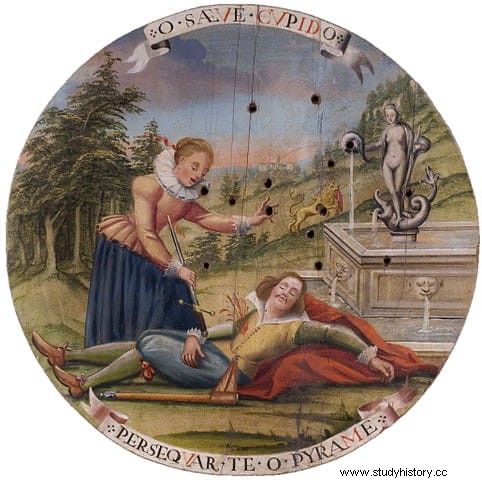Someone once said that everything in literature has been invented since Homer. The truth is that some works are earlier and although they lack that touch of refinement, they laid the foundations for a multitude of themes that would later be dealt with again and again by different authors.
In that sense, the story of an impossible and tragic love is as old as Humanity itself, hence the one we are going to see next, whose protagonists lived -presumably- nine centuries before Christ, is familiar to many. It is that of Pyramus and Thisbe.
I say being familiar because surely more than one reader will have read, for example, Romeo and Juliet , the play that William Shakespeare wrote between 1591 and 1597 (although he also deals with the subject in A Midsummer Night's Dream ). He didn't have to invent much; just putting the artistic genius of him, since others had published similar plots before.

The English bard was directly inspired byThe tragicall hystorie of Romeus and Juliet , by Arthur Broke, which was itself a version of the novel Romeo e Giulietta , by Matteo Bandello, based on the story of Gianozza and Romeo (Hystoria di due nobili amanti ), which Luigi da Porto composed taking as a reference Il novellino by Masuccio of Salerno about two unhappy lovers named Gianozza and Mariotto.
That kind of literary Russian dolls could be continued backwards because if the unfortunate Gianozza and Mariotto really existed, they were only living an experience that has been repeated often throughout history. Geoffrey Chaucer also commented on it in The legend of the good women , just like Bocaccio in the Decameron and in the same way that Fernando de Rojas would do something similar in La Celestina and later other writers would repeat:Góngora (Illustration and defense of the Fable of Píramus and Thisbe ), Thèophile de Viau (Les Amours tragiques de Pyrame et Thisbé ), Edmond Rostand (Les Romanesques ), etc.
But let's keep going back to get to the origin. In the final stage of Antiquity, Nono de Panópolis and several Christian authors recovered -and changed a little- an argument that the Roman poet Publio Ovidio Nasón included in his workMetamorphosis . Completed in the year 8 AD, it is a poem in fifteen books that narrates the history of the world from the beginning to the death of Julius Caesar but combining reality and mythology. In Book IV, Perseus and Andromeda share the leading role with Leucótoe and Clitia, Sarmacis and Hermaphroditus, the Minéides and, finally, Píramo and Tisbe.

Nor was Ovid the first, since Gaius Julius Hyginus was a few decades ahead of him with his Fables , almost three hundred short mythological stories. What happens is that only fragments printed in the 16th century from a medieval copy are preserved, so Ovid's work is the true basis that allows us to know the myth. A myth that, however, was not Roman but went back many centuries, to the time of Queen Semiramis. Consequently, this also makes a change of geographical air to be located in Mesopotamia.
More specifically in Assyria, where that sovereign ruled today identified with Sammuramat, whose reign is situated chronologically between 811 and 808 BC. (or from 809 to 792 BC). The figure of Semiramis seduced many classical and later authors, from Ovid to Ionesco, through Dante, Christine de Pizán, Calderón de la Barca, Shakespeare or Voltaire, for example. Some of them, as we have seen, were also the ones who outlined the myth of Pyramus and Thisbe, whom it is time to get to know more closely, following the Metamorphoses .
It was about two young neighbors who lived in Babylon and were in love, defying their parents' refusal due to the rivalry between both families. Overcoming the prohibition (» …what they could not veto:/ their minds burned equally, captive, both./ There is no accomplice; by gesture and signs they speak,/ and the more it is covered, the more covered the boils fire» ), the two lovers communicated with the classic game of looks and gestures until they discovered a crack in the wall that separated their houses. From then on they were able to incorporate the voice as well, whispering through the slit:

They arranged a meeting one night, next to the mausoleum of Ninus, the mythical son of Baal who had made Nineveh the capital of a powerful empire, later marrying Semiramis. Thus, when the agreed night arrived, both went to the meeting point, next to a fountain that was under a mulberry tree. The first to arrive was Thisbe, but she found that a lioness, satiated after having devoured a prey, had come to drink; so she, frightened, ran away to hide in a small cave nearby.
In her flight, she left behind the veil with which she covered herself; the beast found it and played with it until she left. Then Pyramus arrived, before whom there was a not very encouraging panorama:the footprints of the lioness and the torn garment, stained with blood by a recently hunted prey, indicated that his beloved had died in her claws. Desperate, he drew the dagger from her and fell on her, according to what Ovid tells us was the Babylonian custom for these cases.
Shortly after, considering that the danger was past, Thisbe came out of her hiding place and ran to the fountain. She was confused for a while, since the mulberry tree used to give white fruits and, on the other hand, those of the former had a dark color; this was because Pyramus's blood had dyed them. The young woman soon ran into the body of her beloved and, understanding with dismay what had happened, she took her dagger, also taking her own life.

As is often the case with such ancient tales, there are some variants. In some, Thisbe does not kill herself immediately, but she goes before she gives notice and spends a period of mourning. In others, such as a 2nd-century Roman mosaic found in the House of Dionysus near Nea Paphos (a city in western Cyprus founded by King Nicocles in the 4th century BC), the two lovers did not live in Babylon but in Cilicia. , the southern coastal area of Anatolia (what is today the Turkish region of Çukurova), although it was then part of the Babylonian Empire.
In any case, the gods took pity on Thisbe's heartbreaking lament and intervened to ingratiate their respective families in her common misfortune, thanks to which the young woman's last wish was fulfilled:to rest with her love forever. . It was also a divine grant that, henceforth, the blackberries retained their acquired chromatic tone (in this sense, it should be added that in Latin it was called Pyramea arbor to that type of tree).

As can be seen, even in this there is a remarkable resemblance to the ingratiating pain of Capulets and Montagues at the end of Romeo and Juliet :
